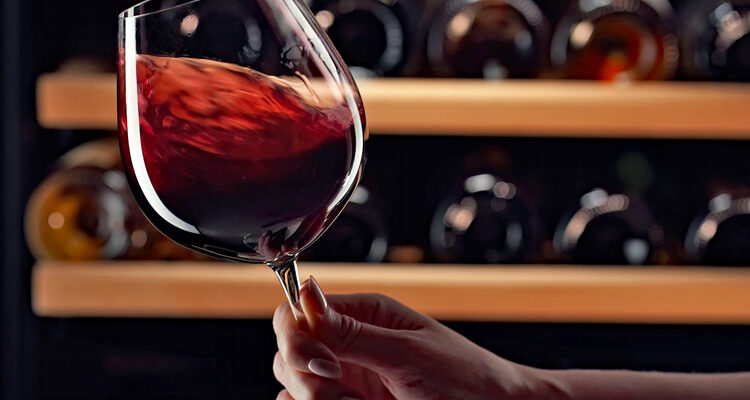To anyone who appreciates the finer points of taking corners at speed on a racetrack, the word ‘Corkscrew’ means only one thing; turns 7, 8 and 8a at WeatherTech Raceway Laguna Seca. It’s iconic. Get it right and you will be smiling for a least the next 1:25.44 seconds as your work your way back for another go around should you happen to be driving a Czinger 21C Hypercar, the current record holder.
Of course, there is an equally compelling use of the word corkscrew that evokes a sense of surprise and delight as you anticipate the simple joy found in a fine glass of wine or spirits. While it may be a different pleasure than deftly making it through the famous set of turns located just east of Monterey, California, the pleasure is no less intoxicating. In fact, it is certain to last longer than a perfect lap of the racetrack. Scott Patrick Cowan takes us inside the world of wine and spirits with insider knowledge only an expert can share.
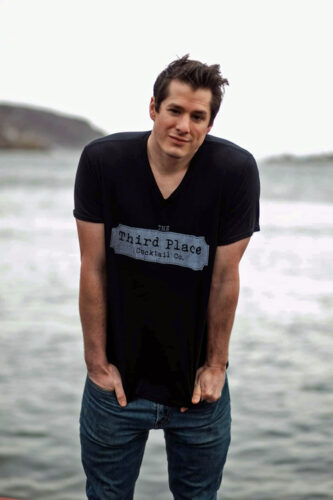
“Terroir.” A chef introduced me to that word, not a sommelier or a winemaker— a chef. He was out bushwhacking and turning over stones for ingredients, and he was quite famous. Too famous to be out glossing over ants to find a succulent to decorate the plate. It’s true, Newfoundland may have one of the shortest growing seasons of anywhere in these parts. The barrenness of 9 months of the year, if you’re not looking, can be stark and captivating (glistening snow is very pretty), but also haunting.
Recently, I started a job in the deadpan whiteout of Winter. Fogo Island is known for its 9 seasons. And starting out here in -30 degrees Celsius blizzards did not indicate to me that there would be anything growing. Every pipe froze. The shelves lined themselves with tins and all form of gin and nuclear winter survival food. I did not have even a bottle of wine from the grocery store. At this time, there was nothing to be seen of terroir. Just snow and sleet assaulting my forehead and hammering gently against my car.
Among many jobs, my main job was to add to a wine program that is vehemently attached to a sense of place. There is a forager on the payroll and amongst unwelcome ingredients are olive oil and lemon. These two ingredients, along with salt, make up almost the entirety of structural wine pairing theory. Nobody talks about it, but it’s true. That’s the easy part, anyway.
I digress. Around March when the whiteout ended and fog encased the trails and the harbour flooded with pack ice from Greenland, we had an opportunity… Go for a walk. See what there is to see. Apparently there were things in the woods that a human could eat if they were starving, or if they were a chef in a five star hotel; they could transform it into artistry.
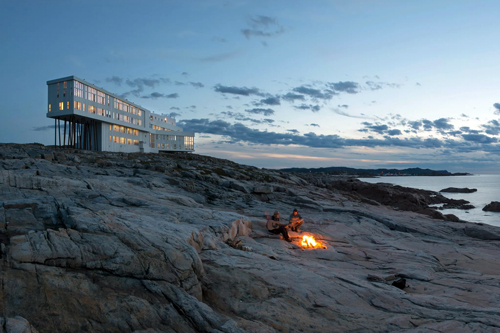
My guide had been living here for nine years. That’s 63 seasons for those listening. He showed me to a lake and to some fronds poking through the ice. That’s sweet gale. It tastes like cotton candy and bananas when it flowers. Right now it tastes like underripe asparagus but it smells like ginger beer. He took me through the woods. That’s myrrh. Not frankincense and myrrh. This stuff oozing from the tree over there. You can chew on it for an eternity. Myrrh used to be there for people to patch up wounds when there was nobody around with a thread and needle. But it’s bitter and floral and it’s the strangest bubble gum on the planet. Over there by that lamp of sunlight: creeping snowberry vine, which yields one single berry annually, and brightens your breath like a forest floor pocket mint. There were many more.
This was all valuable stuff for a chef, even for a bar program that I was inheriting along with my usual wine den.
However, how do we match the wines to these kinds of undocumented ingredients? Atlantic Beach greens that taste like wasabi don’t show up in the textbooks. Beach orach is not dissected in the book What to Drink with What You Eat by Andrew Dornenburg and Karen A. Page.
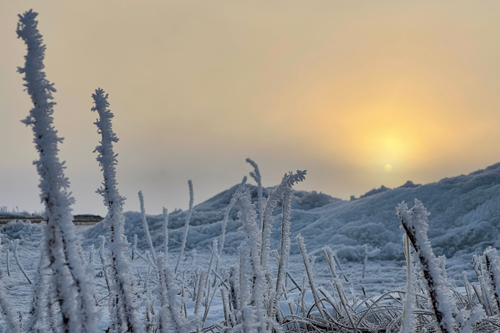
In the present again, snow crunching under boot. Time is an ingredient. That’s what the chef said. This was the first thing I learned about this terroir. There was a human element, just like how a horse trotting over the soil is the terroir of an old timey biodynamic vineyard, or at least a part of it. Here was the missing piece of this island’s terroir. It was people. But also, it was patience.
Is a wine representative of this place because it shed an ocean 150 million years ago, and now the vines roots trickle beneath metres of fossilized oyster shells? I thought that might be a starting point. Thus, I inhaled books on soil geology. Mapped out the entire island and in my mind I could see wine regions like Beaujolais popping up a few miles away where volcanic schist appeared 120 million years ago. Or Gabbro soil in the Loire Valley of France, which glistens with nickel and quartz and decorates most of Fogo island. This wine called Muscadet smells like sea salt and flaked fish. It’s how the house smells when you open up the window. And it’s grown on the same soil somewhere else.
But wine pairings aren’t just about smelling things and rocks.
As I’ve learned, food is more than that. It’s the creative exercise of one person’s mind, and it’s habit based. I have tasted tens of thousands of dishes in ten years as a sommelier (10 plates a day on average, for 260 days a year, times 10 years is 26,000 dishes) and most of the time the pairing changes if the chef picks up smoking, or drinks lots of Pepsi, or isn’t sleeping right, or is going through a divorce. It also changes if any of that is happening to me, especially if I’m not hydrating. (For the record, none of that is happening here that I can tell. Pepsi is rarely sighted in the hands of a chef.)
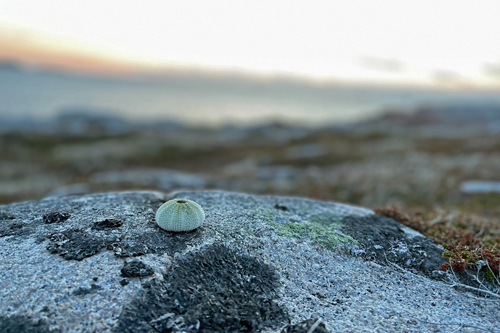
Inconsistent seasoning and emotional state are the main factors for any sommeliers failures with pairing. Not trying the dishes out is a big one, too. I realize that a lot of this will be controversial, even for experts in the field.
When the entire mood of the cuisine is the island itself. Well, you have to understand the island more than the chef.
How to figure out pairings from an unchartered cuisine? I borrowed from food chemistry. I read through hundreds of years of trade history. I was given a book that my employer had commissioned about the plants of the island and I scrawled a hundred pages of disjointed thoughts along the margins. I might have been struggling. I had many all encompassing conversations with the whole team about history, intention, and philosophies. I audited the recipe books for consistent ingredients and asked for access to the kitchen inventory. I read every article ever produced here and dug through the endless thoughts of the many people who had graced the wine program. And they were brilliant. However, there were so many meetings with them, I didn’t have time to have a single sip of wine until the day before guests arrived. Well, then I tried them all, in one afternoon. I was not drunk, just inspired by the device that could pull out a single taste of every bottle there without exposing the wine to an untimely and vinegary death. Maybe a little tipsy. Tough gig. Further to that, I remembered it all, but only because that workday was 18 hours long, of my own joyful volition.
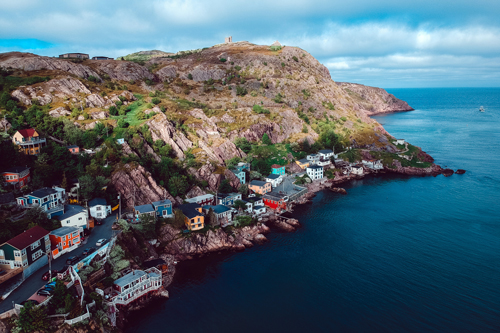
In the end I settled on this. If you need to do a pairing at home: squeeze a lemon on a dish if the wine makes your mouth water. If the wine dries out your gums, flicker salt all over your steak. If the wine is too big for the piece of poached salmon, enrobe it with cream. Find the right weight, or make it happen all on your own. It’s a lot easier to plop a bridge ingredient on a dish than it is to alter the wine. And I’ve tried that, too. There is a place in hell for me from the time I injected argon C02 into a bottle of juicy red wine just to freshen it up for a pairing that nobody ever tasted except for me. And when all is lost, smell and taste the dish and wait for an image to pop in your mind, if you’re lucky.
But if you’re out there turning over rocks and cracking through branches, or picking up seaweed from a few metres from the shoreline, smell it. Commit it to memory. It’s important, even if you’re not pouring wine. Wine is tricky, there are over a thousand different grapes in Italy alone, all nuisanced by the right chef and the wrong olive oil, or all fussy about whether the salt used is Himalayan or from the Atlantic and baking in the sun on rooftop basins. Or does it need more fat so that the wine can show off all of those swanky cool climate acids to cut through all of those fats.
Recently, I picked up a weed and rubbed the oils on my fingers down by a community potato patch peppered with broken sea urchin shells. I poured a honeyed Sauternes and they smelled identical. Wild chamomile they call it—it’s just like microscopic pineapple. The combination of the two made my spine tingle. Smell and taste are integral to wine pairing, but they are mutually exclusive.
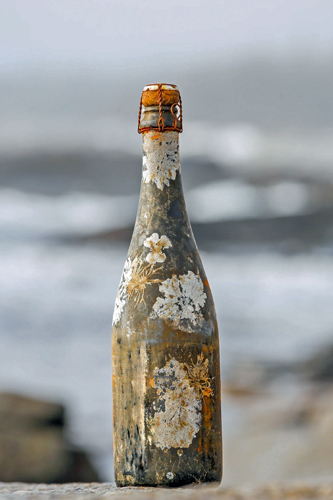
Pouring fermented grapes in the right context can be a lot of fun. Guests have broken down into tears in our dining room. Never with me — usually on my days off when the other sommelier is pouring the right thing at the right time for the person that can receive it. It takes one to swirl the glass and patiently wait for the memories to pop up in front of you. You might need to haul them in like the men I see reeling in cod lines over the side of their punts while the ocean nods peacefully. Or you might need to hold it in your mouth and slurp in air and pause.
Place is the key thought so far. I stopped saying the word “citrus” in the dining room because a lemon is so far removed from us here, that even on a subconscious level it might pull you away. “Here,” is the new buzzword for terroir. Even if you’re sitting in a lobby right now, focusing on these words to distract you from the cost of routine maintenance on your car, there is not hope, not unless you step outside. The terroir of your surroundings might be an urban jungle. It might be a mountain villa. But make sure you’re present, wherever you are, or wherever you’re traveling, and then maybe the beach will incite a moment in your wine glass and in your mind.
Recommendation: Benjamin Bridge ‘11 Blanc de Noirs – Underwater Quest embodies Fogo Island terroir. The grapes themselves are flanked by wild blackberry, mint, chamomile, an onslaught of wild flowers, and sweet grass. Then it cellars in the Atlantic ocean before an anticipatory release. When we have it, we don’t pair it with food, because the wine itself is an event. It pairs best with a longing gaze into a foggy mist which curls around the coast line and, also, a blazing, stuffed wood stove.



